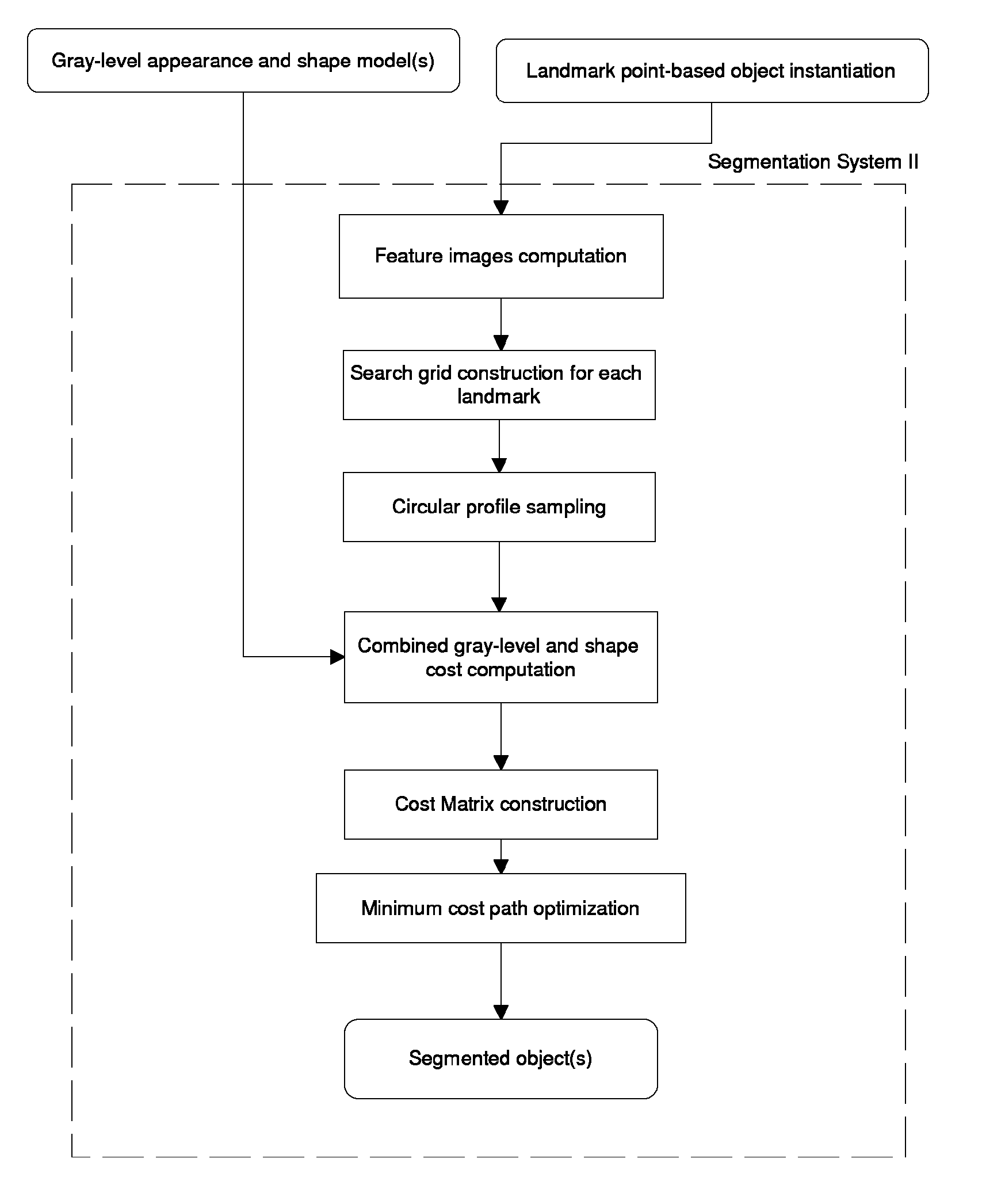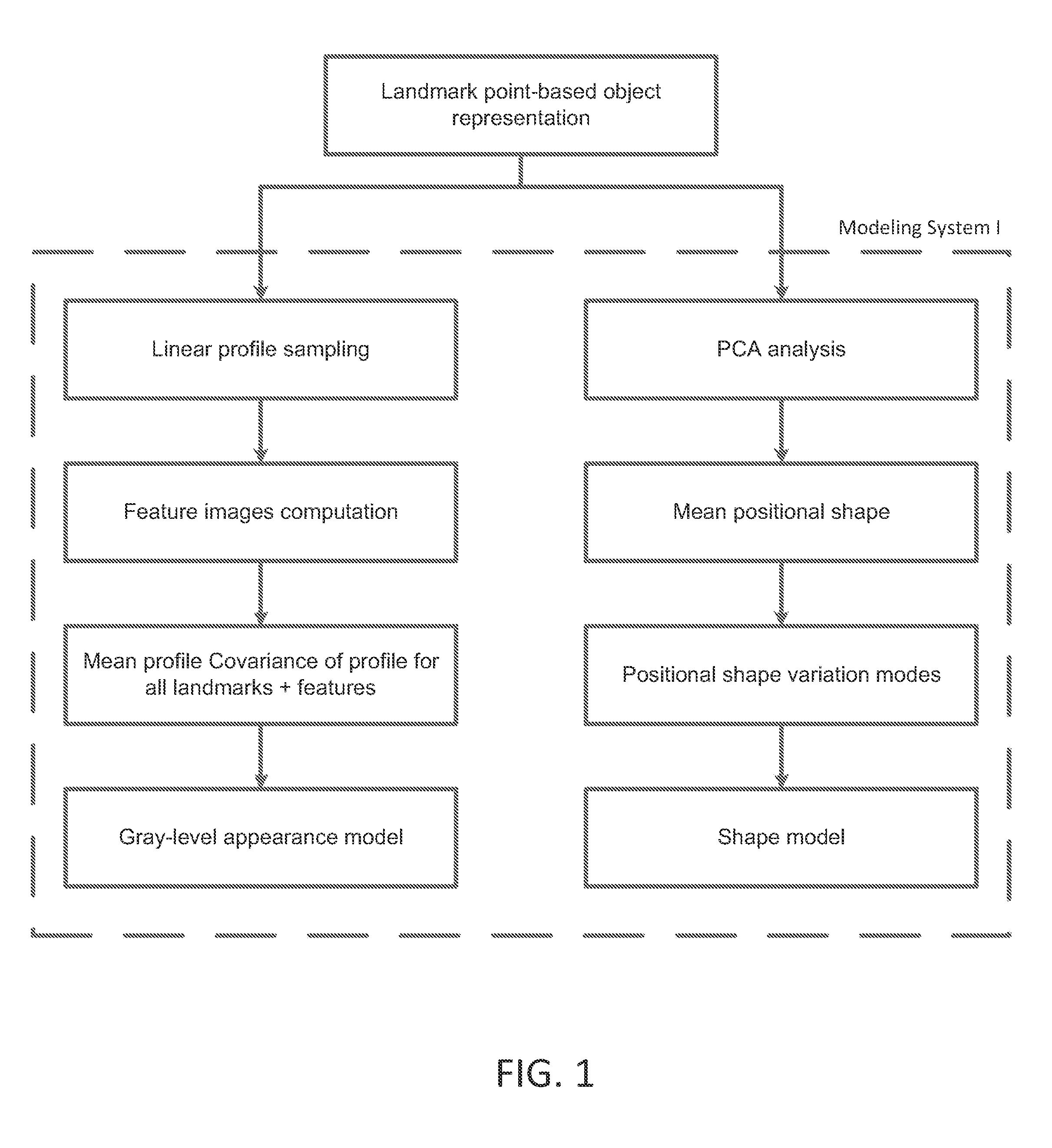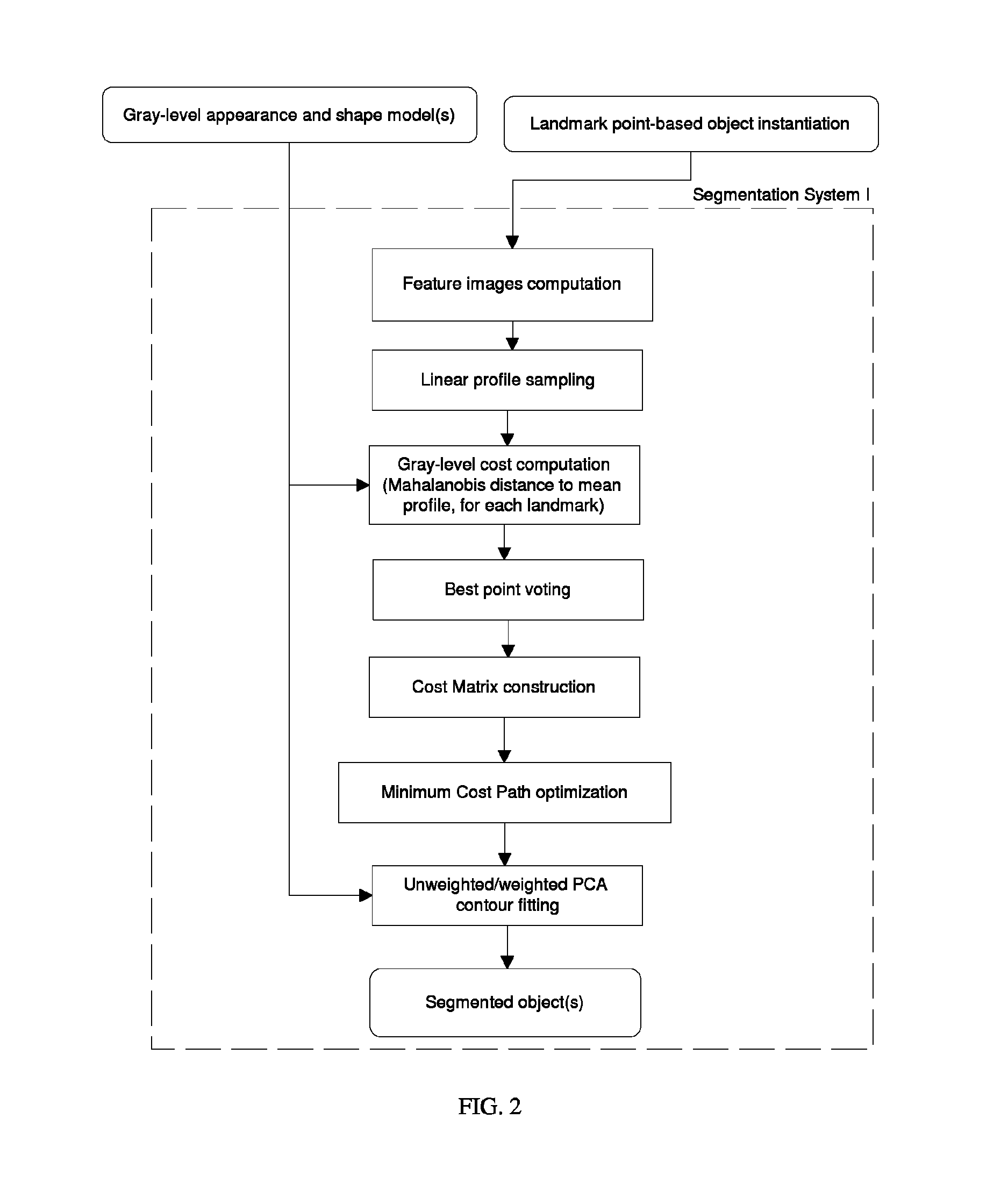Method of segmenting anatomic entities in 3D digital medical images
a technology of anatomic entities and medical images, applied in image analysis, image enhancement, instruments, etc., can solve the problems of limited usefulness of medical images, unsuitable for many medical segmentation tasks, and the likelihood of template matching failing in medical images
- Summary
- Abstract
- Description
- Claims
- Application Information
AI Technical Summary
Benefits of technology
Problems solved by technology
Method used
Image
Examples
Embodiment Construction
[0099]The present invention will be explained in detail with regard to a specific application, namely the segmentation of the lung field in a medical image.
[0100]Object Representation
[0101]In the specific embodiments of the method of the present invention that are described below, an anatomical object in an image is represented mathematically as a fixed number of discrete, labeled points lying on the contour that encloses the object, i.e. p1=(x1, y1), . . . , pn=(xn, yn).
[0102]The contour{pi}i=1n runs from p1 to pn and back to p1. Hence, the object may be captured by a discrete shape vector x=(x1, y1, . . . , xn, yn)T. The coordinate system is chosen such that all points inside the image area lie in the domain [0,1]×[0,1] (FIG. 7).
[0103]Additionally, characteristic points lying in the region enclosed by the contour may be added to the object representation as well, allowing e.g. measurement of entities lying inside the object.
[0104]The segmentation scheme described below needs a num...
PUM
 Login to View More
Login to View More Abstract
Description
Claims
Application Information
 Login to View More
Login to View More - R&D
- Intellectual Property
- Life Sciences
- Materials
- Tech Scout
- Unparalleled Data Quality
- Higher Quality Content
- 60% Fewer Hallucinations
Browse by: Latest US Patents, China's latest patents, Technical Efficacy Thesaurus, Application Domain, Technology Topic, Popular Technical Reports.
© 2025 PatSnap. All rights reserved.Legal|Privacy policy|Modern Slavery Act Transparency Statement|Sitemap|About US| Contact US: help@patsnap.com



